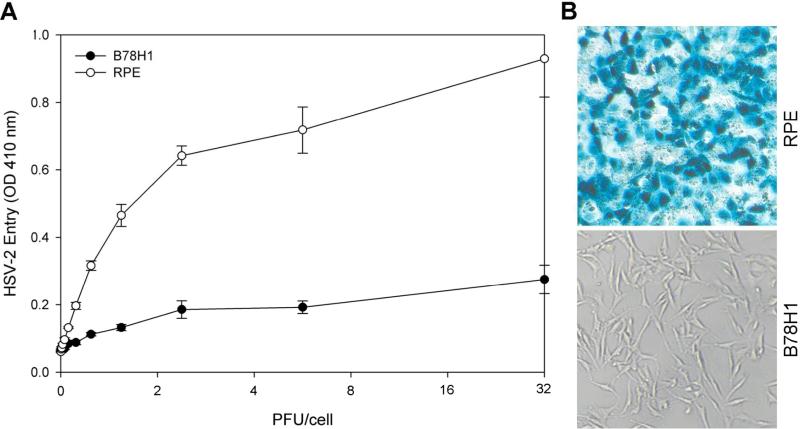Figure 1.
HSV-2 can enter into cultured RPE cells. (A) Dose response curve of HSV-2 entry into RPE cells. Cultured RPE cells along with naturally HSV-2 resistant B78H1 cells were plated in 96-well culture dishes and inoculated with two-fold serial dilutions of β-galactosidase-expressing recombinant HSV-2(333)gJ- virus at the plaque forming units (PFU) indicated. After 6 hours, the cells were washed, permeablized, and incubated with ONPG substrate for quantification of β-galactosidase activity. The enzymatic activity was measured at an optical density of 410 nm (OD 410 nm) using a spectrophotometer. In this and other figures each value shown is the mean of three or more determinations (± SD). (B) Confirmation of HSV-1 entry into RPE cells by X-gal staining. RPE cells grown (4 × 106 cells) in six well dishes were challenged with β-galactosidase-expressing recombinant HSV-2(333)gJ- at 20 PFU/cell. B78H1 cells were also infected in parallel as a negative control. After 6 h of infection at 37° C, cells were washed, fixed and permeabilized, and incubated with X-gal, which yields an insoluble blue product upon hydrolysis by β-galactosidase. Blue cells (representing viral entry) were seen as shown. Microscopy was performed using a 20 × objective of a Zeiss Axiovert 100 microscope. The slide book version 3.0 was used for images.

